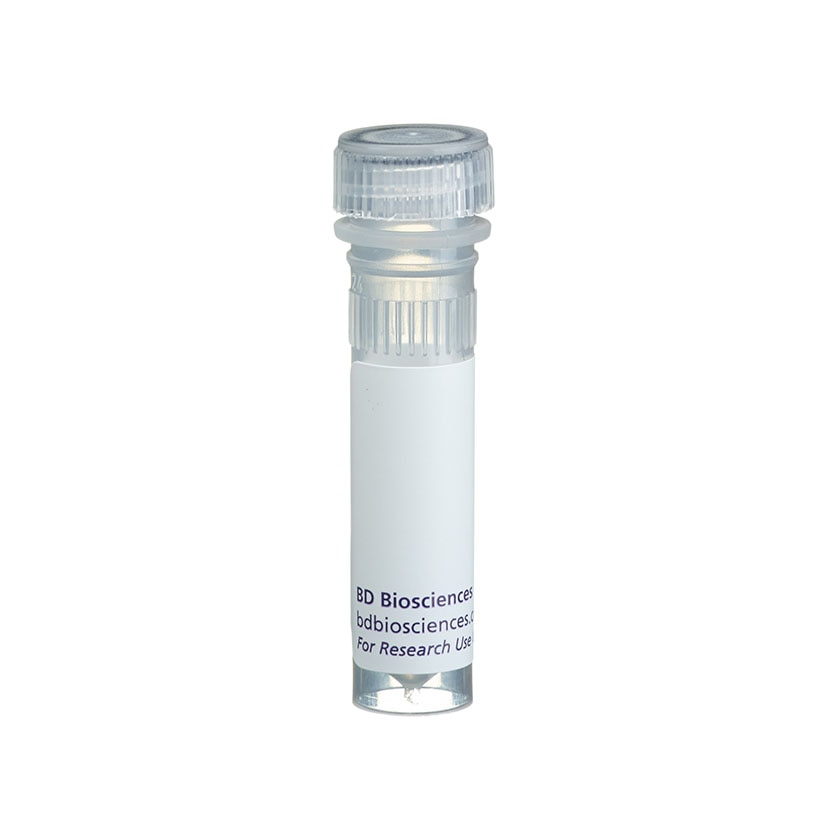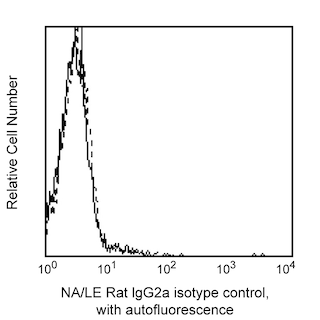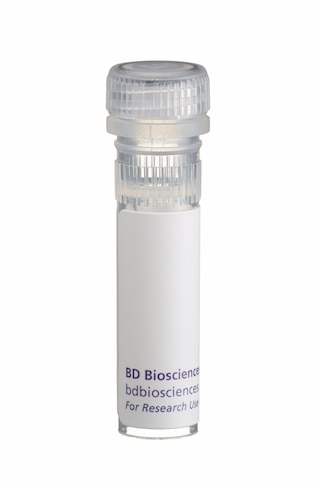Old Browser
This page has been recently translated and is available in French now.
Looks like you're visiting us from {countryName}.
Would you like to stay on the current country site or be switched to your country?


Regulatory Status Legend
Any use of products other than the permitted use without the express written authorization of Becton, Dickinson and Company is strictly prohibited.
Preparation And Storage
Product Notices
- Since applications vary, each investigator should titrate the reagent to obtain optimal results.
- Please refer to www.bdbiosciences.com/us/s/resources for technical protocols.
Companion Products



The mIL4R-M1 monoclonal antibody specifically binds to CD124 which is also known as the α subunit of the mouse Interleukin-4 Receptor (IL-4Rα). The mouse IL-4Rα is a 140 kDa transmembrane glycoprotein that is expressed by B and T lymphocytes and a variety of other hematopoietic and nonhematopoietic cells and cell lines. The cell surface IL-4Rα chain binds IL-4 with high affinity and associates with either the common γ chain (IL-4Rα/γc; aka, type I IL-4R) or the IL-13 receptor alpha subunit (IL-4Rα/IL-13Rα; aka, type II IL-4R complex) to form two distinct types of signal-transducing IL-4R complexes. The type I IL-4 receptor complex specifically binds IL-4 whereas the type II IL-4R binds and transduces signals from either IL-4 or IL-13. The mIL4R-M1 antibody blocks IL-4 binding to cells and is reported to be a potent inhibitor of IL-4's biological activities. The mIL4R-M1 antibody also recognizes naturally-occurring, soluble truncated forms of IL-4Rα (sIL-4R) that result either from enzymatic cleavage of the cell surface extracellular IL-4Rα domain or from differential mRNAsplicing and secretion by cells. These sIL-4R retain their high-affinity ligand binding domain and appear to either enhance or inhibit IL-4-mediated functions depending on the relative local levels of IL-4 and sIL-4R.
Development References (9)
-
Beckmann MP, Schooley KA, Gallis B, et al. Monoclonal antibodies block murine IL-4 receptor function. J Immunol. 1990; 144(11):4212-4217. (Clone-specific: Blocking, Immunoprecipitation). View Reference
-
Chilton PM, Fernandez-Botran R. Production of soluble IL-4 receptors by murine spleen cells is regulated by T cell activation and IL-4. J Immunol. 1993; 151(1):5907-5917. (Biology). View Reference
-
Feldman GM, Ruhl S, Bickel M, Finbloom DS, Pluznik DH. Regulation of interleukin-4 receptors on murine myeloid progenitor cells by interleukin-6. Blood. 1991; 78(7):1678-1684. (Clone-specific: Flow cytometry). View Reference
-
Gessner A, Rollinghoff M. Biologic functions and signaling of the interleukin-4 receptor complexes. Immunobiology. 2000; 201(3-4):285-307. (Biology). View Reference
-
Hassuneh MR, Nagarkatti PS, Nagarkatti M. Evidence for the participation of interleukin-2 (IL-2) and IL-4 in the regulation of autonomous growth and tumorigenesis of transformed cells of lymphoid origin. Blood. 1997; 89(2):610-620. (Clone-specific: Flow cytometry). View Reference
-
Kubo M, Yamashita M, Abe R, et al. CD28 costimulation accelerates IL-4 receptor sensitivity and IL-4-mediated Th2 differentiation. J Immunol. 1999; 63(5):2432-2442. (Clone-specific: Flow cytometry). View Reference
-
Lowenthal JW, Castle BE, Christiansen J, et al. Expression of high affinity receptors for murine interleukin 4 (BSF-1) on hemopoietic and nonhemopoietic cells. J Immunol. 1988; 140(2):456-464. (Biology). View Reference
-
Mosley B, Beckmann MP, March CJ, et al. The murine interleukin-4 receptor: molecular cloning and characterization of secreted and membrane bound forms. Cell. 1989; 59(2):335-348. (Biology). View Reference
-
Sempowski GD, Beckmann MP, Derdak S, Phipps RP. Subsets of murine lung fibroblasts express membrane-bound and soluble IL-4 receptors. Role of IL-4 in enhancing fibroblast proliferation and collagen synthesis. J Immunol. 1994; 152(7):3606-3614. (Clone-specific: Flow cytometry). View Reference
Please refer to Support Documents for Quality Certificates
Global - Refer to manufacturer's instructions for use and related User Manuals and Technical data sheets before using this products as described
Comparisons, where applicable, are made against older BD Technology, manual methods or are general performance claims. Comparisons are not made against non-BD technologies, unless otherwise noted.
For Research Use Only. Not for use in diagnostic or therapeutic procedures.
Report a Site Issue
This form is intended to help us improve our website experience. For other support, please visit our Contact Us page.